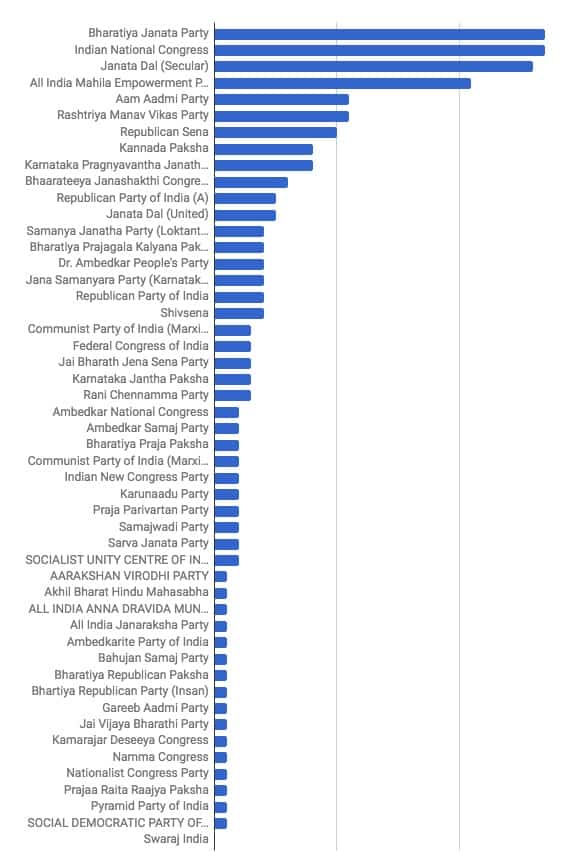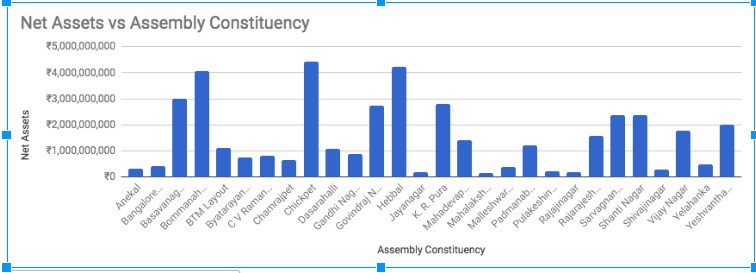Citizen Matters and Open City, our open data initiative has been sharing information and data about incumbent MLAs with their track record, candidates and details of past elections. This map gives you an easy way to check your constituency and candidates contesting elections.
A quick analysis of Bengaluru Assembly Constituencies Candidates shows:
- Total 431 candidates in Bengaluru
- Hebbal has 28 contestants, and an average of 16 candidates per Bengaluru constituency
- 51 parties and 191 independents contesting.
- Bharatiya Janata Party and Indian National Congress contesting all seats, JDS in all but Anekal
- One of the newest parties All India Mahila Empowerment Party is contesting in 21 constituencies!! But only 2 women – BTM Layout’s Kum. Jayalakshmi B V, Jeelani Fathima from Byatarayanapura
- Communist parties are contesting just 2-3 seats each – CPI(M), CPI(ML) and SUCI(M)
- Shiv Sena is contesting Yeshvanthapura, Hebbal, Chamrajpet and Bommanahalli
- Aam Aadmi Party has 11 candidates
- 5 candidates from Ambedkar National Congress, Ambedkar Samaj Party, Ambedkarite Party of India

Where are the rich candidates in Bengaluru?
We added all the wealth declared by all candidates in a constituency, and divided it by the number of candidates. Chikpet emerges to be the most wealthy constituency, followed by Hebbal and Bommanahalli. [Data source]

Check the complete information on the constituency of your choice, here: citizenmatters.in/may12. More voter information for all constituencies of Bengaluru can be checked here: bengaluru.citizenmatters.in/author/poll-desk
Voter guide: https://citizenmatters.in/voters-guide-karnataka-assembly-elections-2018-faq-24980